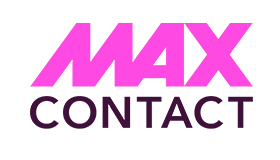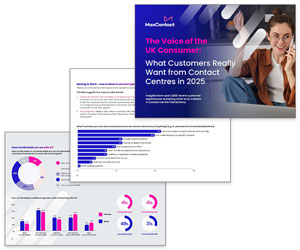The dialler is one of the most important pieces of infrastructure in any call centre. The right dialler lets you communicate with customers and clients in the right way, while adding speed and efficiency to your contact centre operations.
Modern diallers can also help you with quality assurance, regulatory compliance and strategic decision making.
What Is a Call Centre Dialler and How Does It Work?
The dialler is the hub of your outbound contact centre. It places calls to customers and can document their outcome.
It can route answered calls to either agents, automated payment systems or relevant recorded messages. When a call is finished it can help agents move quickly to the next customer contact, saving time and money.
Diallers work by automating some or all of the outbound call making process. This improves the productivity of agents and also the experience of customers, because calls are as fast and efficient as possible.
What Are the Different Types of Dialler Software?
The main options are a manual dialler and an auto dialler.
Manual Dialler
A manual dialler is like a traditional phone. An agent manually dials numbers from a call list, one after another.
Auto Dialler
As the name suggests, an auto dialler automates much of the dialling process. It digitally dials numbers, and can also dial multiple numbers at once, passing answered calls to available agents.
Manual vs Auto Dialler
Why would you choose one over another? Most call centres now opt for auto dialling, because it significantly boosts productivity. Agents spend more time talking to customers and less time dialling unresponsive numbers.
Manual dialling can still be useful, but only for campaigns involving a small number of high value customers who demand a more personal approach.
From Predictive to Progressive: Introducing the 3 Different Dialling Modes
But even within auto dialling, it’s possible to choose different modes depending on the volume of calls that need to be placed and the relative sophistication or personalisation of the campaign. Here are the 3 main dialling modes you need to know about.
Predictive Dialling
Predictive dialling uses a sophisticated algorithm to match answered calls with available agents. It dials multiple numbers but can automatically adjust the rate to match your contact centre situation.
The calling rate speeds up or slows down in real time to take into account the ebb and flow of the working day. In effect, it means fewer abandoned and dropped calls and a more compliant contact centre.
Progressive Dialling
Progressive diallers are auto diallers that slow the pace down by only dialling a number when an agent is available to take the call.
Dialling is instant and automatic, so the system still allows for a relatively high number of calls, but it also eliminates the risk of customers abandoning calls or waiting a frustratingly long time before being connected to an agent.
Preview Dialling
A preview dialler takes the pace down another notch. When an agent indicates availability, information about the next call is sent to the agent for preview.
After a set amount of time – say, five minutes – the number is automatically dialled. The purpose of this delay is to let the agent prepare for the call, using information typically taken from the company CRM system.
Cloud vs On-Premise: Which Dialler Option Is Better for Your Contact Centre?
Another big decision to make around diallers is whether to implement a cloud-based Software as a Service (SaaS) option or host the equipment and software in house.
It’s fair to say that cloud options are now becoming more common, because they take away a lot of management pain. You don’t have to host equipment on site, and you don’t have to maintain, secure and update it.
At the same time, cloud solutions are not static – providers offer new features and services all the time, which can simply be downloaded into your system. With on-premise alternatives, upgrades are far more complex, and consequently far less common.
Cloud systems are also easy to scale as your business grows. At the same time, you pay for exactly what you use, rather than having to hold spare capacity in reserve ‘just in case’.
The one remaining argument for on-premise systems is really around security. Having a metal box in the basement gives peace of mind, especially in industries where customer data is especially valuable and regulatory scrutiny intense (finance, for instance).
But this is often a false sense of security. Your data is only as safe as the systems and processes you have in place to protect it, which need to be constantly updated to counter emerging threats.
Many call centre operations now prefer to outsource security concerns to responsible cloud providers. The trick here is to choose a provider with impeccable security credentials.
Teams That Use Dialler Software and Their Use Cases
Many teams around your organisation will benefit from good dialler software.
Sales
Sales campaigns are often high volume and low touch. Predictive dialling is the gold standard for straightforward, high volume sales campaigns (like commodity sales).
It can quickly and efficiently work through large datasets, making sure leads are contacted while they’re still warm. The best predictive diallers minimise abandoned calls (and the amount of time customers spend on hold) and maximise the time your agents spend having conversations.
They can be set to play messages if they meet an answerphone, and will recycle numbers (placing unanswered calls back into the call queue) in a way that ensures your customers or leads are contacted, but never pestered.
Customer Service
Customer service teams often use progressive dialling to target current customers with after-sales information or courtesy communications. It’s a low risk option that can improve customer experience, help nurture loyalty and effectively help agents upsell additional products and services.
Because an agent is always available to have a conversation, the customers you have painstakingly nurtured over a period of time feel valued.
Debt Collection
Preview diallers are particularly helpful when the reason for the call is complex or sensitive. For example, debt collection calls are more likely to end positively if agents have the time to gather all the information they need beforehand.
Must-Have Dialler Software Features
As well as 3 dialling modes, good dialler software also offers a range of productivity-enhancing features. These should include:
Advanced Outbound Features:
Your dialler should come with Answer Machine Detection (AMD), which automatically detects answer machines before connecting calls to your team, saving time. Advanced data segmentation is also valuable, because it lets you automatically prioritise the most promising leads in any campaign.
Contact Centre Analytics:
Uncover trends and opportunities with advanced analytics. Data-driven insights drive better performance, as well as improving agent productivity and wellbeing.
Quality Assurance:
Improve sales performance and customer service with QA feedback loops and the ability to listen in to conversations from anywhere and coach agents in real time.
Those are three key features any good dialler should have, but there are many more.
Dialler Software Benefits You Can’t Ignore
Improve Contact Centre Metrics Like AHT
Average Handling Time (AHT) is a calculation based on the time agents spend talking to a customer, the amount of time callers are on hold and the time taken on follow-up tasks, divided by the number of calls handled.
The lower your AHT, the better. It means you can handle more calls, improve efficiency and reduce costs. A good dialler can improve AHT and a host of other contact centre metrics, by allowing agents to handle more calls, more efficiently.
Excel at Sales and Debt Collection
Whether it’s sales or debt collection, the best results happen when good agents talk to customers. Whether it’s a high-volume, low-touch sales campaign or more sensitive debt-resolution calls, the right dialler means your agents spend more time in conversation with customers and less time processing unanswered calls or connecting to answering machines.
Keep Your Contact Centre Compliant
A powerful predictive dialling algorithm speeds up and slows down depending on the conditions in your contact centre. If fewer agents are available, the dialling slows down, helping to ensure you stay within compliant boundaries for abandoned and dropped calls.
Or you can switch to progressive or preview modes for more personal contacts. The dialler can also ensure that the frequency of calls to a contact never exceeds official limits.
Seamlessly Integrate With Your CMS
A dialler that integrates with your CMS system is a huge advantage. It means that the systems feed information to each other, so your agents always have the details of previous contacts at their fingertips.
That reduces the risk of customers becoming annoyed by having to repeat information they’ve already previously given.
It can also provide insights into customer satisfaction rates, preferred times and methods of communication and so on.
Choosing the Best Dialler Software for Your Business Requirements
When choosing the best dialler software for you, focus on what you will use it for. Think about who your customers are, the reasons you contact them and the teams that will use the dialler.
The answers will be specific to your business, but there are also more general considerations you should take into account.
Security and Compliance
Make sure cloud-based systems are housed in secure, compliant data centres. In addition, any system should come with tools to ensure that you’re GDPR and Ofcom compliant, alongside the latest security certifications and – if you take payments – a secure payments manager.
Ease of Implementation
Make sure your chosen software is easy to install, maintain and upgrade, and that your provider will support you at every step.
Ease of Use
The easier the software is to operate, the more likely it is that your teams will make full use of all its productivity-enhancing tools and features. Ask for a free trial or demo to test it out.
Scalable and Flexible
Your solution must be able to scale up and down easily, to meet the needs of your customers and adjust to fluctuations in demand.
Service and Communication
A contact centre depends heavily on the service that supports their digital solutions. Ask potential providers how easy it is to raise support tickets, and how long they typically take to resolve. Get to know your providers before you make a decision.
Companies That Have Successfully Implemented Dialler Software
These companies both replaced ageing systems with modern cloud-based diallers, with impressive results.
Compare My Insurance
Compare My Insurance is one of the largest independent insurance and protection specialists in the UK. But dialler downtime, data issues and missed opportunities were hampering the business.
MaxContact’s dialler solution integrated seamlessly with the company back office systems. It has significantly increased contact rates while providing complete transparency around performance and progress.
APJ Solicitors
APJ Solicitors, a leading financial mis-selling specialist, needed to increase call volumes and boost efficiency, but its basic VOIP phone system was no longer up to the task.
MaxContact’s solution increased call volumes by 110% in the first year, and improved average agent call efficiency by 36%. Productivity has risen five-fold over the company’s previous solution.
Dialler FAQs
Q: What’s the Difference Between Predictive Dialling and Power Dialling?
Power diallers simply move through a list of numbers sequentially, as opposed to calling multiple numbers at the same time.
They move on to the next call as soon as the previous one has finished or is unanswered or busy. Very simply, they mean an agent is always present to take an answered call, whereas with predictive dialling it may take a moment to connect the customer with an available agent.
Q: What’s the Difference Between a Phone System and a Dialler?
The phone system is the infrastructure that allows you to make calls. The dialler is a piece of software that helps you control and monitor the speed and efficiency of calls that use the phone system to connect.
Q: Can Dialler Software Be Used for Both Outbound and Inbound Calls?
Yes, you can accept inbound calls on the same system.
Q: How Do I Pick the Right Contact Centre Dialler Software for My Business Needs?
Talk to providers with contact centre experience and ask for a free trial of the software. Discover our top tips to finding the right provider, here.
This blog post has been re-published by kind permission of MaxContact – View the Original Article
For more information about MaxContact - visit the MaxContact Website
Call Centre Helper is not responsible for the content of these guest blog posts. The opinions expressed in this article are those of the author, and do not necessarily reflect those of Call Centre Helper.
Author: MaxContact
Published On: 4th May 2023 - Last modified: 9th May 2023
Read more about - Guest Blogs, MaxContact






 MaxContact is the AI-powered customer engagement software that helps you turn every customer conversation into a high-impact, revenue-driving moment. We empower your teams to connect smarter, perform better, and scale faster – without losing the human touch.
MaxContact is the AI-powered customer engagement software that helps you turn every customer conversation into a high-impact, revenue-driving moment. We empower your teams to connect smarter, perform better, and scale faster – without losing the human touch. 
































